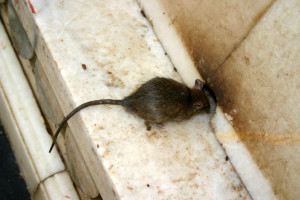 Rat or Rodent urine is responsible for the spread of leptospirosis, which can result in liver and kidney damage. It can also be contracted through handling or inhalation of scat. Complications include renal and liver failure, as well as cardiovascular problems. Also, rodent bites and scratches can result in disease and rat-bite fever.
Rat or Rodent urine is responsible for the spread of leptospirosis, which can result in liver and kidney damage. It can also be contracted through handling or inhalation of scat. Complications include renal and liver failure, as well as cardiovascular problems. Also, rodent bites and scratches can result in disease and rat-bite fever.
A viral infectious disease called Lymphocytic choriomeningitis (LCMV), is transmitted through the saliva and urine of rats. Some individuals experience long-term effects of lymphocytic choriomeningitis, while others experience only discomfort for a short period of time.
One of the most historically dangerous rat-borne diseases is the bubonic plague, also called “Black Plague,” and its variants. Transfer occurs when fleas from the rat bite human beings. Fleas transported on rats are considered responsible for this plague during the Middle Ages, which killed millions. From the transmission of bubonic plague to typhus and hantavirus, rat infestations can prove harmful to human health.
Rats also are a potential source of allergens. Their droppings, dander and shed hair can cause people to sneeze and experience other allergic reactions.
The diseases transmitted by rats fall into one of two categories: the diseases transmitted directly from exposure to rat-infected feces, urine or bites and the diseases indirectly transmitted to people by an intermediate arthropod vector such as fleas, ticks or mites.
Diseases Directly Transmitted by Rats are:
Hantavirus Pulmonary Syndrome. This is a viral disease that is transmitted by the rice rat. This disease is spread in one of three ways: inhaling dust that is contaminated with rat urine or droppings, direct contact with rat feces or urine, and infrequently due to the bite of a rat.
Salmonellosis. Consuming food or water that is contaminated by rat feces bacteria can cause this disease.
Leptospirosis. This is a bacterial disease that can be transmitted by coming into contact with infected water by swimming, wading or kayaking or by contaminated drinking water.
Individuals may be at increased risk of Leptospirosis infections if they work outdoors or with animals.
Rat-bite Fever. This disease may be transmitted through a bite, scratch or contact with a dead rat.
Diseases Indirectly Transmitted by Rats include:
Plague. This disease is carried by rats and transmitted by fleas in the process of taking a blood meal. Domestic rats are the most common reservoir of plague.
Colorado Tick Fever. This is a viral disease that is transmitted by the bite of a tick that has taken a blood meal from a bushy-tailed woodrat.
Cutaneous Leishmaniasis. This disease is a parasite that is transmitted to a person by the bite of an infected sand fly that has fed on a wild woodrat.
Hantavirus. Some species of rats such as the cotton rat or rice rat are known carriers of hantavirus. Norway rats and roof rats are not known transmitters of hantavirus. Victims may be debilitated and can experience difficulty breathing. Hantavirus is transmitted to humans when they inhale airborne particles from rodent droppings, urine or carcasses that have been disturbed.
Please note that the first symptoms of the virus can be mistaken for the flu. Patients then suffer breathing difficulties that may prove fatal if not treated effectively and immediately.
In order to avoid hantavirus, all mouse feces, nest materials and dead rodents must be removed from the home. Spray suspected areas thoroughly with disinfectant before sweeping to avoid having anything become airborne. Use gloves to handle rodent carcasses or droppings and a respirator must be worn with functioning cartridges. Buildings should be aired out following an infestation. Not all rodents have been found to carry hantavirus. Deer mice, cotton rats, rice rats and white-footed mice are the most common transmitters.

